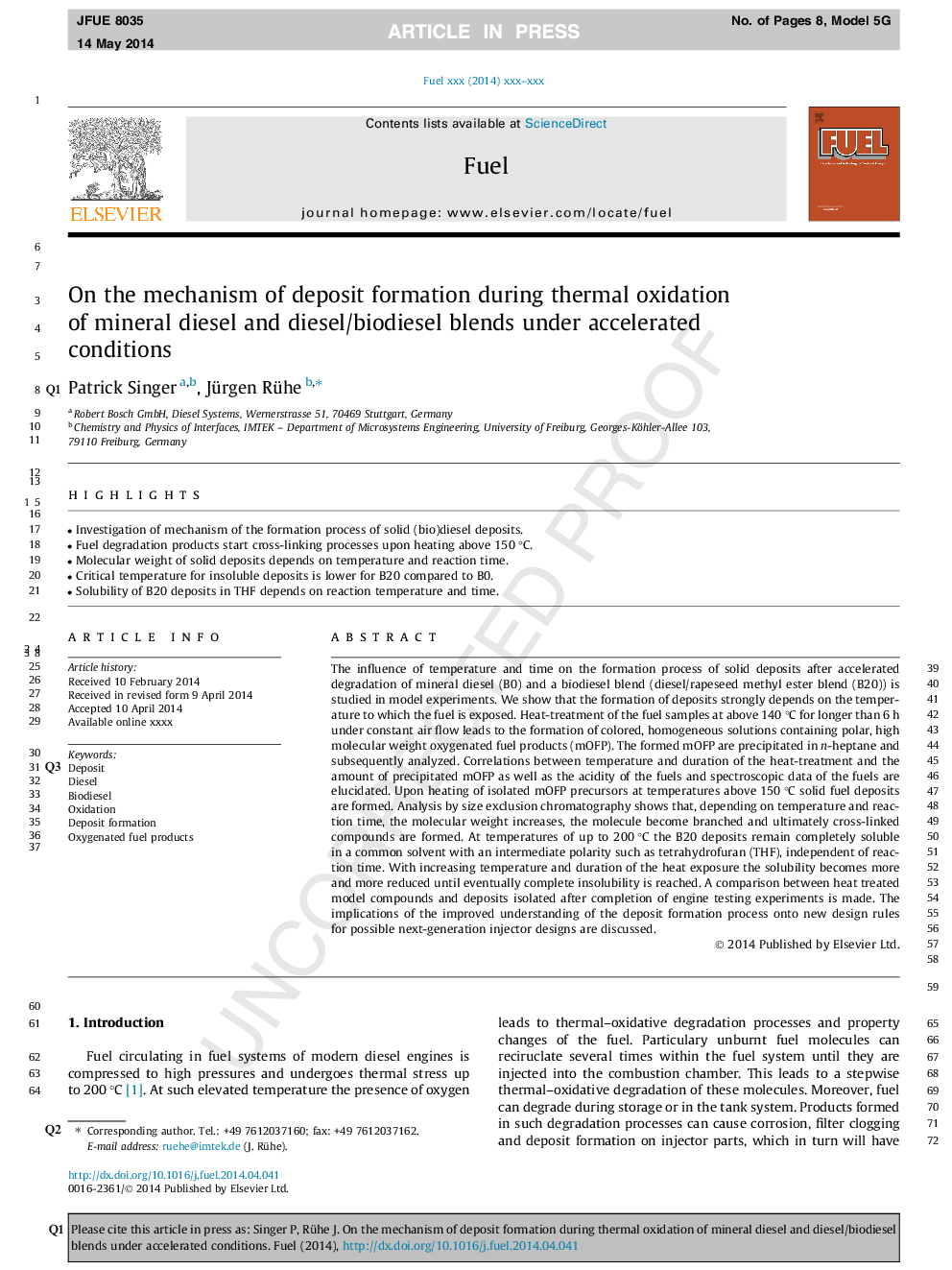| Article ID | Journal | Published Year | Pages | File Type |
|---|---|---|---|---|
| 6637188 | Fuel | 2014 | 8 Pages |
Abstract
The influence of temperature and time on the formation process of solid deposits after accelerated degradation of mineral diesel (B0) and a biodiesel blend (diesel/rapeseed methyl ester blend (B20)) is studied in model experiments. We show that the formation of deposits strongly depends on the temperature to which the fuel is exposed. Heat-treatment of the fuel samples at above 140 °C for longer than 6 h under constant air flow leads to the formation of colored, homogeneous solutions containing polar, high molecular weight oxygenated fuel products (mOFP). The formed mOFP are precipitated in n-heptane and subsequently analyzed. Correlations between temperature and duration of the heat-treatment and the amount of precipitated mOFP as well as the acidity of the fuels and spectroscopic data of the fuels are elucidated. Upon heating of isolated mOFP precursors at temperatures above 150 °C solid fuel deposits are formed. Analysis by size exclusion chromatography shows that, depending on temperature and reaction time, the molecular weight increases, the molecule become branched and ultimately cross-linked compounds are formed. At temperatures of up to 200 °C the B20 deposits remain completely soluble in a common solvent with an intermediate polarity such as tetrahydrofuran (THF), independent of reaction time. With increasing temperature and duration of the heat exposure the solubility becomes more and more reduced until eventually complete insolubility is reached. A comparison between heat treated model compounds and deposits isolated after completion of engine testing experiments is made. The implications of the improved understanding of the deposit formation process onto new design rules for possible next-generation injector designs are discussed.
Related Topics
Physical Sciences and Engineering
Chemical Engineering
Chemical Engineering (General)
Authors
Patrick Singer, Jürgen Rühe,
